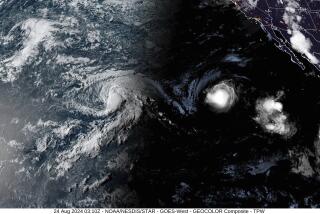Stark Tragedy: U.S. Policy Invites Disaster
As if the death of 37 American sailors and the injury of 21 others on the guided-missile frigate Stark was not bad enough, now the tragedy is being compounded by innuendoes that somehow the captain and crew themselves were to blame.
Some so-called defense experts and members of Congress have seized on the fact that the Stark did not take the attacking Iraqi aircraft under fire, and in so doing they have cast doubt on the courage and competence of the ship’s commander, Navy Capt. Glenn R. Brindel.
“If the critic wishes to distribute praise or blame,” wrote Karl von Clausewitz a 150 years ago, “he must certainly try to put himself exactly in the position of the commander; in other words, he must assemble everything the commander knew and all the motives that affected his decision, and ignore all that he could not or did not know, especially the outcome .”
To fairly evaluate Capt. Brindel’s actions, we must put ourselves inside his shoes during the moments immediately before the attack. While that is almost an impossibility, there are some things we do know. We know that he was sailing under strict rules of engagement that sought to minimize the chances of any diplomatic incident in the Persian Gulf. Under those rules Brindel was correct in having his computerized Phalanx weapons system (which by all accounts was capable of destroying the incoming Exocet missiles) set on “remote-manual.” He would have been derelict if they had been placed on automatic, for such an action would have heightened the chances of shooting down “friendly” aircraft that were common in the region.
Second, although some 230 ships of other nations have been attacked since the Iran-Iraq War began in 1980, we know that in all the years the Navy’s Middle East Force has been sailing in the Persian Gulf, no U.S. warship (or U.S. merchant ship, for that matter) has been attacked. We know that many times in the past both Iraqi and Iranian warplanes had “locked on” to American ships with their radars, but all had veered off when warned (as the Iraqi jet that attacked the Stark was warned) that the ship was American. Brindel had absolutely no reason to suspect that this pattern was about to change.
Finally, we know now that the incoming missiles were only detected in a visual sighting by the Stark’s lookouts seconds before they struck. But even if they had been picked up on the ship’s radar, Brindel would have had only some 60 seconds to respond. In those seconds he would have had to convince himself that against all previous experience an attack was indeed imminent, and to have sounded the warning to his crew--which he in fact did--and to have switched his weapons-defense systems from manual to automatic. Glance at your watch in the comfort of your living room and imagine your burglar alarm has just gone off. See how many actions you can take in the next 60 seconds.
If there is blame to be fixed, it lies farther up the chain of command. The operational responsibility for ensuring that the Middle East Force has the capability to protect itself rests with the commander of the U.S. Seventh Fleet, headquartered in Yokosuka, Japan. Knowing that the overwhelming majority of shipping attacks in the gulf have been by air, why did he allow the carrier Kitty Hawk to sail away before the carrier Constellation was on station, thereby depriving the Middle East Force of the air cover essential to its safety?
And if he couldn’t see the danger, why didn’t those in Washington who oversee such ship movements countermand his orders? For there in the halls of the Pentagon, the White House and the Congress are where the real problem lies--at the feet of those military and civilian leaders who set and oversee military policies and strategies and who provide the means for their execution. Unlike the crew of the Stark, they had forewarning.
These leaders should have known that one of the major assumptions governing the conduct of the war in Vietnam, the stationing of U.S. Marines in Beirut and the stationing of a token force in the Persian Gulf--the notion that “military forces are not for fighting, but for signaling”--was not only bankrupt but an invitation to disaster.
When it comes to military force, Clausewitz warned, “all action is undertaken in the belief that if the ultimate test of arms should actually occur, the outcome would be favorable .” Instead, U.S. policy appears to be based on the opposite premise--if the ultimate test of arms should occur, the outcome will be disaster.
If American forces in the Persian Gulf had been commensurate with the national interests supposedly involved, no warplane would have dared to come even within striking distance of the American fleet. But Washington decided on a show of force that was at best minimal. As it now stands, the Middle East Force consists of about seven small warships, all Oliver Hazard Perry-class, known derisively among sailors as “‘the Chevettes of the Navy” because of their cheap “cost-effective” construction. Where were the big guns--the carriers that are at the heart of the 600-ship Navy and the Ticonderoga-class cruisers with their highly touted Aegis integrated combat systems designed specifically for protection from air attack?
With such a token force, neither Iranian nor Iraqi aircraft had any fear of locking their radars on American ships. “Deterrence,” observed Sir Peter Hill Norton, a British admiral of the fleet, “is all about creating a fearful doubt in the mind of a potential aggressor that any likely gain is simply not worth the inevitable risks.” The attack on the Stark, as with the attack on the Marine barracks in Beirut, provides grim evidence that such deterrence did not exist.
And there is yet another disturbing parallel to the Beirut tragedy. The Marines were originally sent there as a “peacekeeping force” but when the mission changed to assisting the Lebanese government, their rules of engagement were not changed to keep pace with the change in mission. The Middle East Force was originally dispatched to the Persian Gulf to implement the Carter Doctrine to safeguard the gulf from Soviet aggression. Now the Soviets--one of whose ships recently struck a mine in the gulf--share common objectives with the United States.
For some time now the mission has been protection of shipping from Iraqi and particularly Iranian air attack. Yet even though more than 200 ships have been hit by such attacks, the rules of engagement did not change until after the attack on the Stark. Not only were the rules of engagement not rethought as conditions changed, neither was the premise that access to Persian Gulf oil was “vital,” which by definition means interests so critical to a nation’s survival that it will fight and die to protect them.
The attack on the Stark raises two fundamental questions: Why, with the United States now importing only about 13% of its oil from the Persian Gulf--an amount hardly crucial to U.S. survival--were American lives put in jeopardy there? And as to arguments that while the oil was no longer vital to the United States, it was still vital to our European allies and Japan, one must ask why, if it is indeed vital to them, do neither give any indication they are prepared to put their own sailors’ lives at risk?
In investigating the attack on the Stark, Congress, rather than questioning the actions of Brindel and his crew, should start with asking those who set and oversee military policies and strategies and provide the means for its execution--Congress especially included--just why the ship was there in the first place.
More to Read
Sign up for Essential California
The most important California stories and recommendations in your inbox every morning.
You may occasionally receive promotional content from the Los Angeles Times.






